Humming Blog |
|
This is one of about seven female Rubythroat hummingbirds that are showing up daily to our garden. This one in particular shows up every 20 minutes. She's nesting within about 1/8 mile of our place.
This has been an extraordinary year, both good and bad, that has produced unusual results compared to the last 20 years. We had a dominant male show up on time and take care of business with all of the females in the first 10 days. But things changed quickly. For three weeks we had no males looking over our yard. I believe something did happen to our male, so the only ones that show up are males from surrounding territories that will appear around 10:00 PM, stay the night, and be gone before 7:00 AM the next morning. I want to make a point that confirms just how importance and dedicated they are to what their purpose is. The male hummingbirds love their food, but nothing we do in our garden can pull a male from another territory, until his duty is fulfilled. They protect what's theirs, and after all activity is diminished in their own territory, it's only then that they'll make the trip to our place to enjoy the luxuries unavailable in their own. Not having an adult male constantly sitting around you and making himself known every minute of every day, sure makes you miss them in the good years we had. However, we're not missing out on hummingbird activity. The male that shows up late uses the fountain and all the feeders and flowers in excess while he's here. What surprises me is that 3 or 4 sneaker males each year during nesting season, have all disappeared. However, it seems the female population is about the same. It's not a huge concern because hummingbirds are polygamous. They don't pair up like most other birds. One male can easily do the job with countless females. Oh boy, that's Gotta be tiring! During the day we get females showing up, and especially the one nesting nearby, that gives us entertainment frequently. The females aren't afraid to show up and feed at will, knowing no little missile will be scorching out of the trees to chase them around. They take their time without looking over their shoulders constantly. The one female in particular LOVES the flowers with a few pokes at the feeders, and this gives me the opportunity for photos. The others still feed heavily at feeders most of the time and get back to their nest as quickly as they can because their nests are ½ mile to 2 miles away, but the one has given me rare opportunities to catch an adult female in the flowers. She doesn't have to be in quite as big of hurry, because she's only about 15 seconds away from her nest. I fully anticipate the males that are protecting surrounding territories to show up late July along with the migrant population we've built up over the years. But with no males dominating the yard, I expect many photos of the young birds in late July, as they won't be chased around or knocked off their flowers just at the time I'm about to snap the photos. It's a different year, but things are so good around the garden. So far we haven't had too much moisture, smoke isn't filling the skies, and mosquitoes aren't driving us crazy, yet. The temperatures have been much cooler than normal for the past six weeks, with only a few days above average. We had horrible winds for two weeks from the northwest, right at the time of the northern migration. I believe this delayed many birds, and halted others hundreds of miles southeast of us. Many birds showed up late, but they still showed up. It's a year with so many unexpected events, but life goes on with the birds. They've got a purpose, and nothing will stop them from fulfilling it.
0 Comments
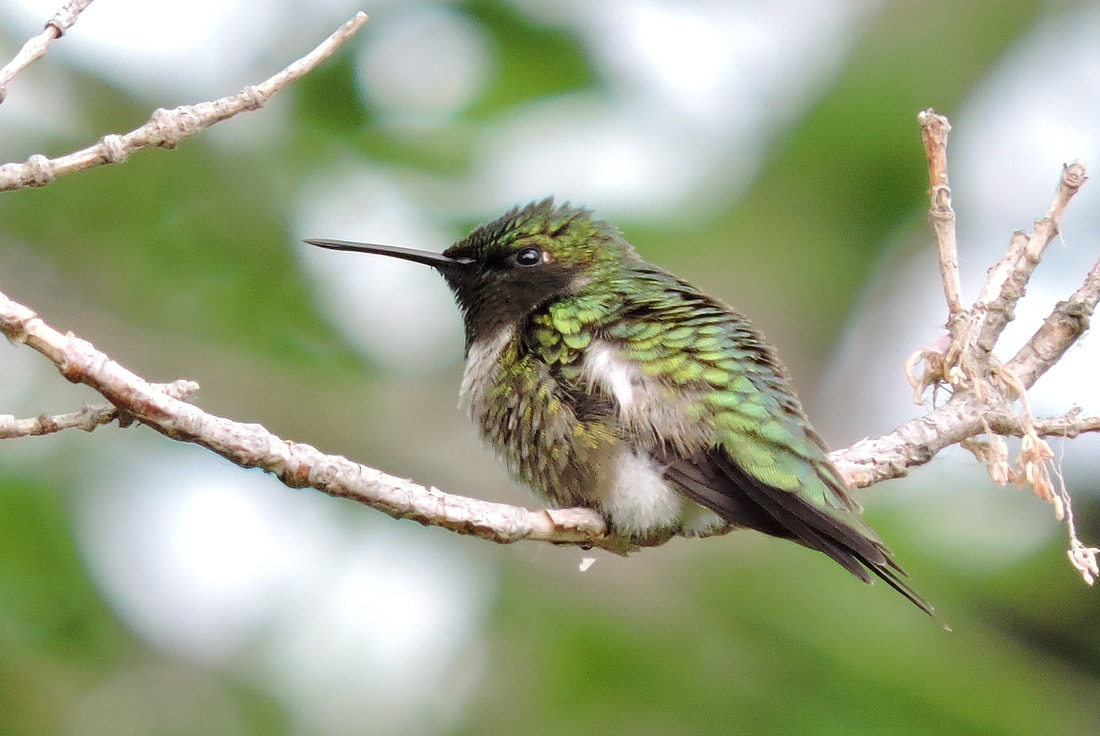 It's been an unusual year in every way. The trees and plants are advanced by about two weeks compared to any year in the past. Saying this, I would've expected hummingbirds early. That just wasn't the case. A large weather system divided northern U.S. and Canada in springtime. That put a sudden halt on some of the migration. Some birds showed up on time, then there was a gap of time, and once again more birds showed up. I don't think last year's male ruby throat was the same as the previous year and if he did show up, he's still the fraidybird. He was a scared male that stuck to the back corner of our garden. With so many dangers and predators throughout nature, one has to have unique skills to survive repeatedly over several years. We had the odd male show up, but by their behavior they didn't show the dominance required to rule over the Hideaway. On May 30th, things changed, and dramatically! A male showed up, a new one. He showed similarities to his grandfather Ziggy, but more extreme. His attention issues require a serious dose of Ritalin. He just can't do one thing at a time. He leaves his perch to head for feeder, and on the way be distracted by the bird pond, flowers, the fountain, a chickadee, and then end up flying around the house right back to his perch. He started off perching in among the trees with his tail flared, fully expecting another male to ambush him. This behavior went on for about 2 hours until he eventually realized there was no one in charge. In that time, he quickly took over full authority of Hummingbird Hideaway. Now his perches are at the highest peaks around the yard. There's nothing high enough for him. If we had 1000 foot redwood tree, he probably perch on top of it. He's now in control. Although he's taken over all rights to the property, he still has to hone some of his skills. Jousting with tree branches and chasing chickadees and song sparrows isn't going to find him the girls and keep out the other boys, but his excitement is beyond entertaining. He uses the fountain several times a day, feeds from every blooming flower, and thoroughly enjoys every square inch of the garden. His behavior is very unique, and perhaps this is the start of a new legacy. Meet "Striker".  The temperature hit precisely what was needed to trigger the trout spawning migration. Within less than two degrees difference the entire species was on the move. Likewise, within a few degree tilt of planet Earth, the entire Ruby throat species is also on the move. It's a variance small enough to keep that species consistent or similar to each other, but large enough to protect that same species from something catastrophic. The reason I bring this up today is because we are at that time where millions of Ruby throats over the next few weeks will be triggered into a migration that will gradually spread over much of the continent. At this very moment a specific number of rubies have suddenly been sparked to move north and to fulfill their purpose. Everyday, more and more will receive the notice until the migration is spread out for hundreds of miles. If they were to travel all at the same time, severe weather could take out a large chunk of their population, but because of their uniqueness, each one has been created with their own individual setting, to react precisely at the time meant for them. Although we won't see any new Rubies appearing on the Southeastern shore of the US for a couple weeks, many of them at this very moment have woken up in Mexico with an urge to move toward their summer home. Now it's only a matter of time before they arrive at their preferred location to meet up with the preparations we've laid out for them. As they complete their purpose to reproduce and provide entertainment for us, we'll be decorating our gardens to keep them content. So as they wake up this morning with a purpose, likewise this is our time for preparation so we'll be ready for their return. 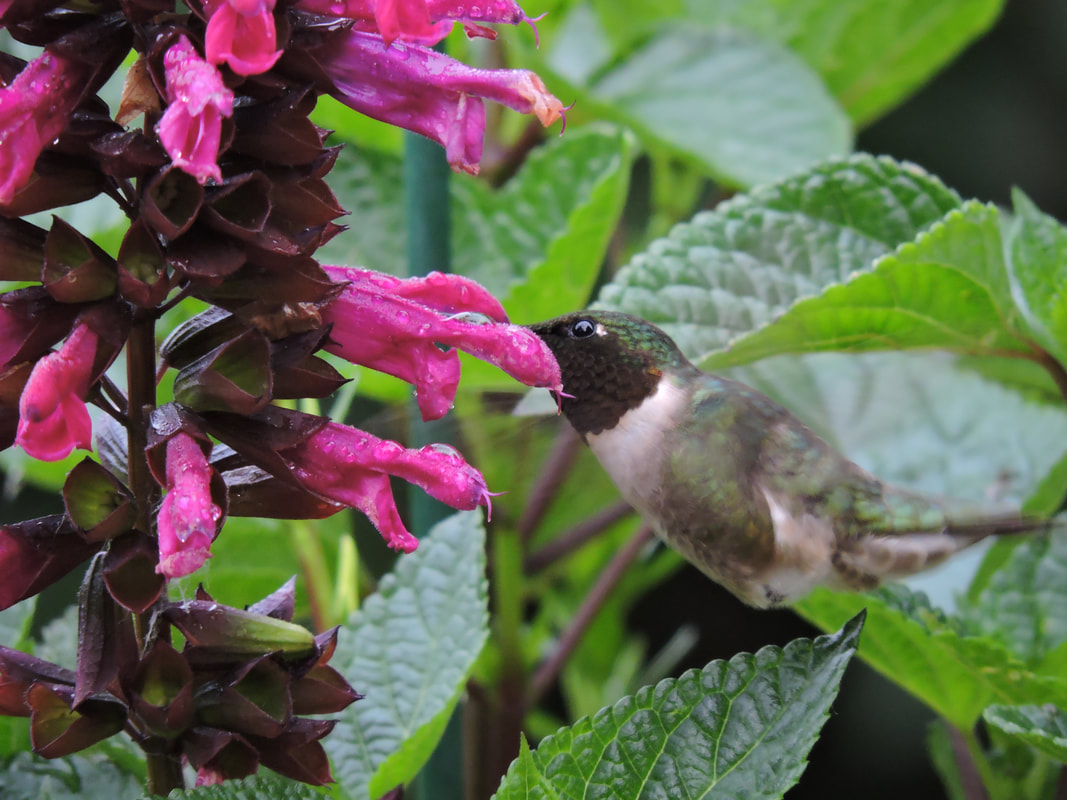 Every year we've got our standard reliable go to plants that we know the hummingbirds like, but each year we're trying new varieties to see if there's something better and suits our climate. This year I came across this "Rockin' Fuchsia Salvia". With a name like that it's gotta work. It was a little bit behind when we first got it, but now it's pushing out the blooms, and there are many more blooms just starting. The flower color is spectacular and stands out among the darker foliage. The only question that remained was whether it was effective for hummingbirds. We have a perennial called a gas plant that we put in the ground a few years ago as a seedling. With a difficult soil we had to wait a few years for a couple of them to bloom. I had no idea whether this one would attract hummingbirds especially with plain white color for blooms. It's flowering season in our garden is July 1st to July 15th. It's a little bit off the time for the young birds that leave the nest, but for the dominant male that sticks around, he would be the judge of it's worthiness. Well, with these two new flowers in the garden, we just had to wait on our local boy to let us know. First you have to understand that we have thousands of flowers blooming in our yard right now, so the options are enormous, but this is also a perfect opportunity to let us know which ones are the most worthy. For a hummingbird to return to the same flowers amongst a large garden filled with flowers, it pretty much proves to us which flowers stand above the rest. I always rate the flowers out of five. The 4's and 5's are the best and can be interchangeable. What I mean by that is that one hummingbird may choose one flower as its prime choice while another hummingbird may choose another as it's prime choice. Anything that's rated one or two is primarily for color and for attraction purposes, anything with a three rating is a very good choice for a hummingbird garden. Anything rated four and five are absolute must-haves, and this is where each hummingbird will choose its favorite among the best, and this is why I say a four may be a five to one bird, while a five may be a four to another. The results of the two new flowers to our garden were impressive. The gas plant was a little bit further from my view where I watch over the garden, but a couple times within a 6-hour period, that I noticed, a male showed up to each stock of flowers and made sure he hit every single flower. You can always tell when a hummingbird visits every flower in a stock, that it's worthy and high on the rating system. The Rockin' Fuchsia Salvia was equally, if not a little more effective. It was located right in front of us on the deck, and although we scared him away a few times without knowing he was there, he kept returning, and when he did, he made sure he hit every single flower. So the results were great on both of these flowers. I'll be taking several cuttings from the fuchsia and making sure each pot next year has its own, and while the gas plant is a much slower growing perennial, it's found a permanent place in our garden, and I'll be planting many more. The gas plant grows to about 24 - 36 inches tall and the Salvia it's supposed to grow to about 24 in. Of course, you have to understand that many Salvias are perennials in warm climates, but planted here as an annual in my zone 2. In planters raised off the ground, these will make the perfect centerpiece for every smorgasbord of nectar in each pot. I have a few images to see, as well as some information. Don't look for half an hour to try and find a hummingbird in the gas plant, because you won't find it, but I managed a very early morning image of our hummingbird in the Salvia. Very poor light at 6:30 a.m. made it difficult for a clear picture, but clear enough to show his interest. So if I have to score both of these flowers, I would definitely place them both in the 4 to 5 rating, but probably give the salvia the upper edge considering it blooms profusely until frost. 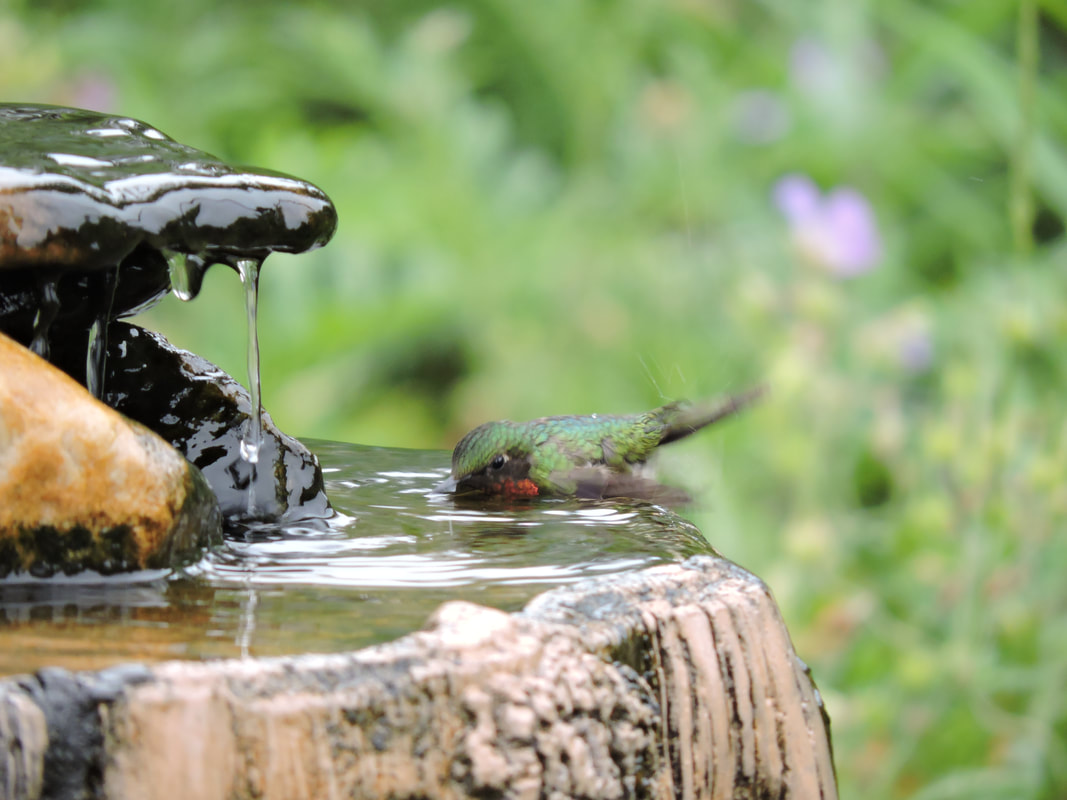 While the residents in the southern US are starting to see decreased hummingbirds in their garden due to nesting, many of us are still waiting for our first of the year. In spring time when the hummingbirds are moving North, people pay very close attention to the migration maps to see when they're approaching their own garden. Frustration starts to set in when they're spotted in regions around your own place while you anxiously await to see your own. Remember that these first birds spotted could very likely be migrating birds that are heading to a location hundreds of miles north. These are the very first birds, but the wave to follow could be several days or even weeks after these very first birds. So when you hear of someone near you that's seen a hummingbird, don't be too concerned that yours aren't there yet. The very first ones are oftentimes just the luck of the draw on a bird passing through and choosing any food source available or within sight. This is the reason hummingbird feeders should not be placed just in areas that are convenient for you to see them. Don't forget to place some in wide open areas, visible from all directions. These are the feeders that always attract the migrants. They are not going off memory from a previous year where a feeder was tucked underneath an archway. Migrant birds are very opportunistic, and will choose food options that are visible in flight. This is another way to attract additional birds, not only for the migration North and South, but to increase your local population, as many young males from the previous summer are looking for territory and breeding grounds of their own. I couldn't stress this enough, the more feeders, the more visible, and the more spread out they are, will increase the population around your garden in the future. This was a male from a previous year that remembered the fountain from a previous summer. Male Ruby-throat N.E. of Edmonton, Ab. Canada. 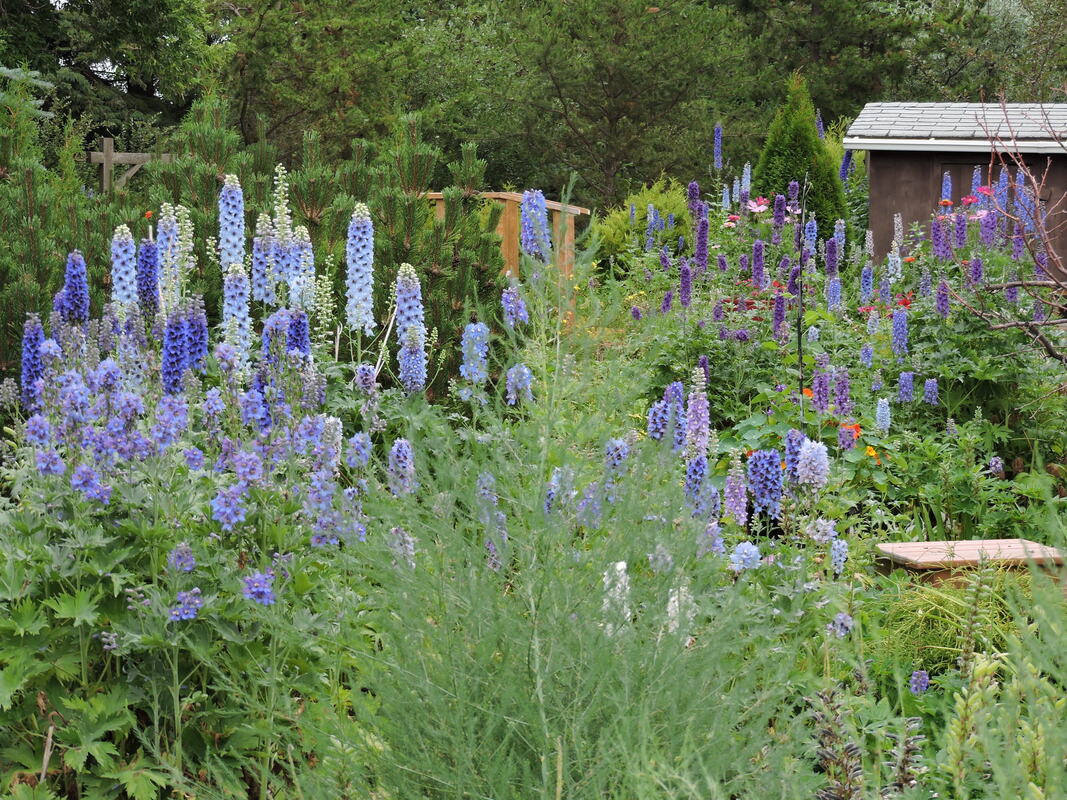 Opportunities to attract hummingbirds across the continent can vary greatly, dependent on your location. Some people don't need to do a whole lot to attract hummingbirds due to the high population in certain regions, and some people have to go to extraordinary measures just to attract one because of low populations in others. Hummingbirds are not complicated creatures to understand, but they are extremely complex in their abilities. The very first thing we need to know to attract hummingbirds is that they are opportunistic. Food motivates them. The more food you have available, the greater chance you have to not only attract them, but to attract many, and keep them returning. Color represents food, and the more options you have, the more secure they feel in their survival. If you provide one food source, their survival is dependent on that one food source not running dry. Most plants have a season that they produce nectar, and that season is oftentimes very short, especially with perennials. When that perennial runs dry, the hummingbird then requires a different source, so the more sources you provide, the much greater likelihood of the hummingbird or birds sticking around. One feeder can attract them, but half a dozen feeders prove to them it's a worthy location. A few flowers can get their attention, but they know they're insufficient for survival, so plant many. Just like your eyes light up when you arrive at a food court with several delicious options where the smell permeates everywhere, a garden filled with flowers and feeders covering the territory is certain to get their attention. Eventually, when a mother hummingbird leaves the nest with her young, she'll head to a land of promise, were food options are abundant and never run dry. Truthfully, you could never plant too many good choices for hummingbirds. Don't limit yourself, but use the space you have to let them know it's a serious contender for their attention. 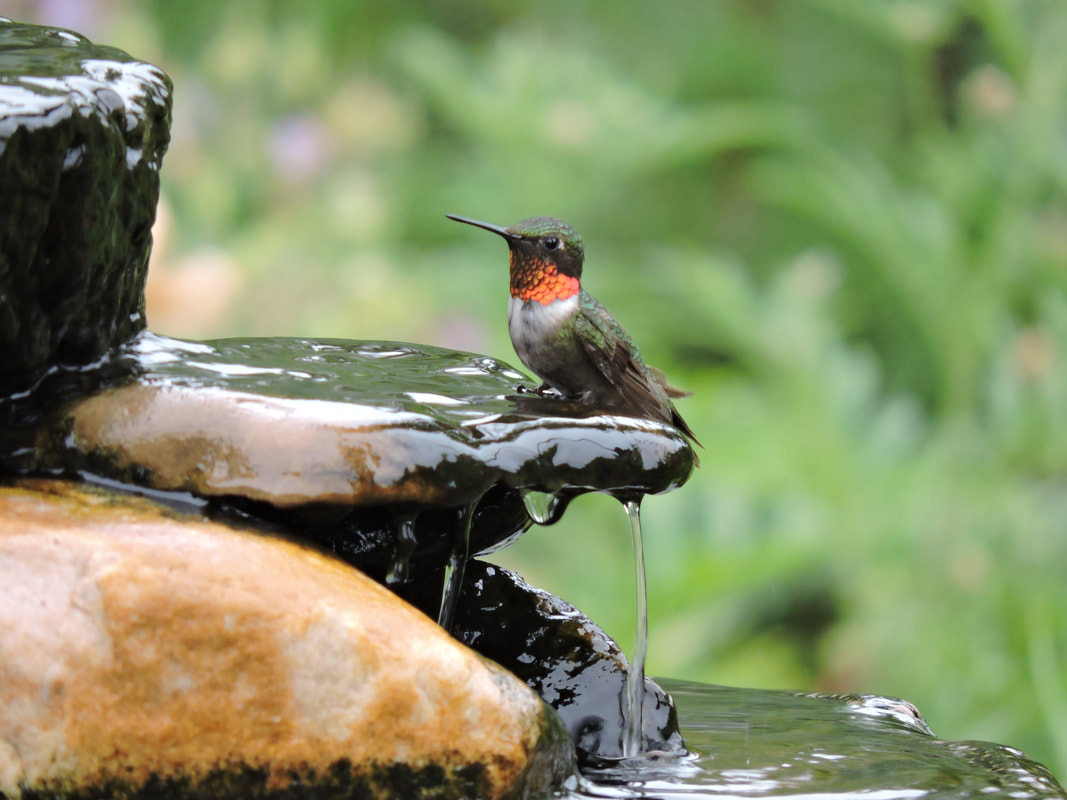 This has been a recent idea that's been floating around the hummingbird groups. I don't know where this idea first came from, but you have to understand these birds in order to know whether or not it's true. A lot of other birds like to gather in flocks and feel secure in groups, but hummingbirds are solitary birds, but not to say they won't be found together under certain circumstances. Although they appear very cute and cuddly, their personality more closely resembles that of a wolverine. As a matter of fact, once the mating ritual and breeding have been performed, the relationship appears to be quite dysfunctional. There's no more quiet time, but rather a whole lot of bickering, and they go their separate ways. He defends the territory which is very similar to the males of other bird species, and the female will build the nest and care for the young, alone. They are solitary birds. They search out food sources for themselves, and have little desire to share with others. The two young siblings take a little bit of time to develop their independence, and oftentimes before this point are seen feeding or sitting nearby each other. It doesn't take long before that relationship has ended, as food and territory take priority. In springtime, every bird we see traveling north is a mature bird, each with a strong desire to fulfill their own purpose. Males will fight to the death, if necessary, for a territory that they find suitable, while the females fulfill their own desire in raising up their young. They don't travel in flocks, but are sometimes found at a common food or water source where there are few available. The first to move north are the males, and they have no intentions of informing or sharing with any of the others of a perfect location they've found. They want it for themselves while they wait for the females to arrive, for the purpose of breeding. They need to locate the perfect option because the females to follow will also be looking for a perfect location to nest, with nearby food sources for herself and for the young when they leave the nest. The male will breed with as many females as possible in a season, which is another reason they don't want any other males in their territory. When you hear hummingbirds squeaking, it's not a "hello, how are you" greeting, but more of a "mine, and get out" warning. So with the question of whether or not they send a scout to look out for the rest of them, they are all about a me, myself, and I mentality, and would much rather just be left alone. This was last year's male Ruby-throat hummingbird. Photo taken in July, 2021. N.E. of Edmonton, Alberta, Canada. 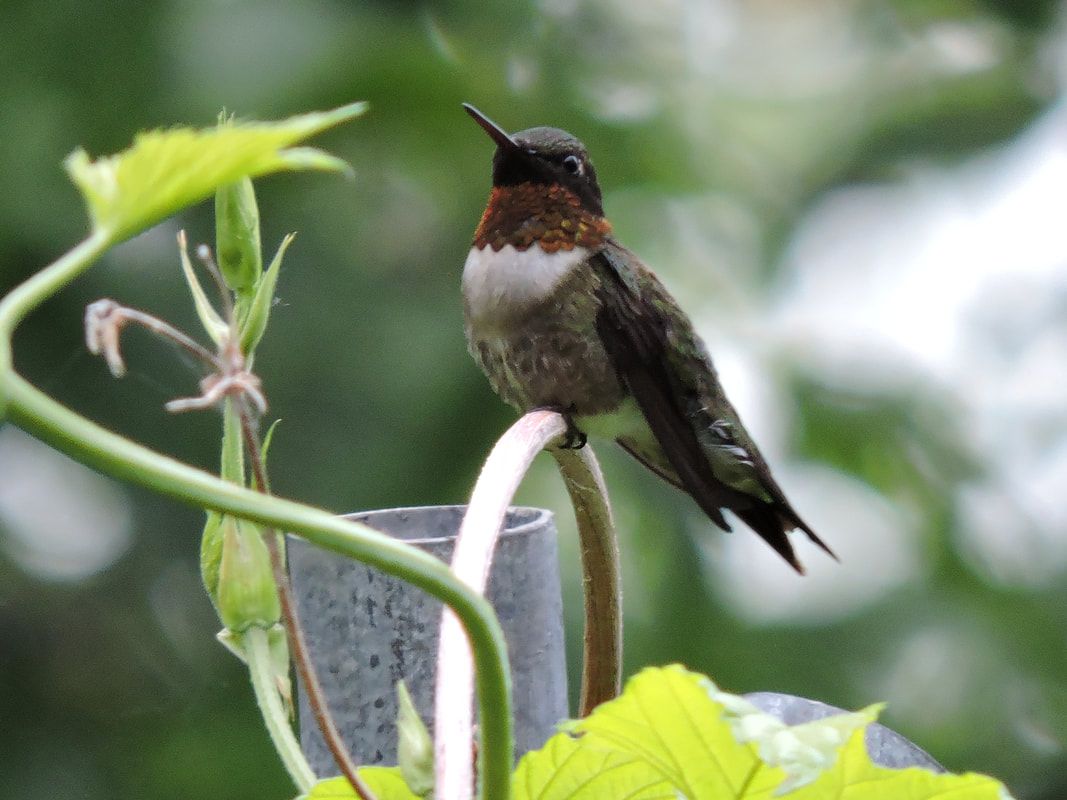 After a few very nice days, we are now expecting another week of temperatures right around the freezing mark. It really is a tease to have little snippets of Spring, with plants starting to pop through the ground, and then right back to Winter again. Spring is coming though in my neck of the woods, and there's absolutely nothing that compares. I still have drifts of snow that are 2 ft high in areas of the garden, but in one month things will be dramatically different. The white on the ground will suddenly be transformed to green, and the silence in the yard will be transformed to songs of many species. You can smell it in the air, you can hear it throughout the garden, you can see it in many forms and you can feel it in the soul. It's life that springs forth so quickly, and triggers all the senses, and absolutely nothing across the planet can compare to the emergence of Spring. We'll be listening to every chirp and song, hoping to identify familiar ones from the past, and possibly some new ones as well, but all of this new life will lead up to the final prize when we finally see the return of our tiny little friends, the Ruby-throat hummingbirds. This is Gunner, our dominant male Ruby throat from last year. He had several perches around the garden, and unless you knew of them, he could be incredibly difficult to find. 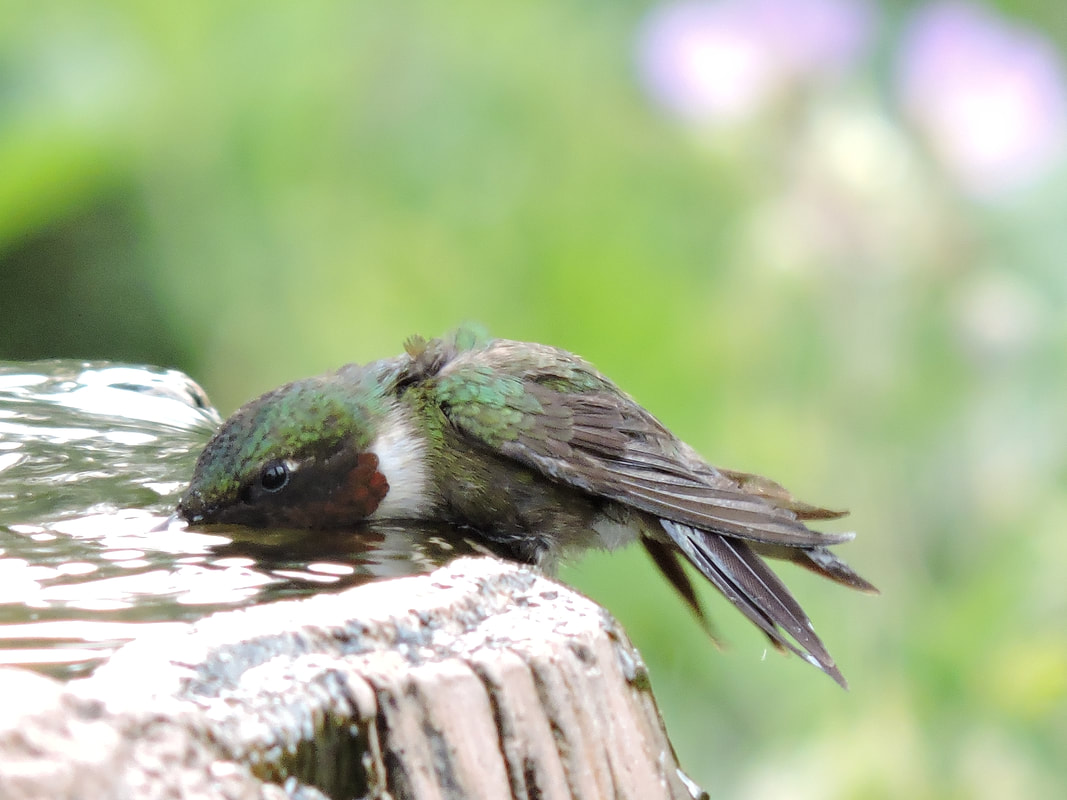 I'm thinking that most of us hummingbirders are very much alike in this manner. When the hummingbirds start showing up, we do the frequent glancing at each of the feeder locations, hundreds of times throughout the day to see if there's one around. As a matter of fact, I find myself glancing at the feeders well after they've gone south. It just becomes a habit. Every task you do, there's the brief glance, and if you've got several feeders like I do, it becomes a routine instead of just a simple glance. But this routine was lacking one crucial glance every 30 to 60 seconds. It was missing a glance toward the fountain. I realized this a couple years back. Something caught my eye at the fountain, which was about 75 ft away. After staring at it for a few moments, I caught the movement, and it was our little Gunner (male Ruby throat). It made me question whether I had missed many opportunities of him at the fountain. So I started adding the additional glance to the fountain as well as the feeders, within my routine. From that moment on, that additional step paid off. Sure enough, it was several times throughout the day that Gunner would be at the fountain. Whether sitting and relaxing, gardening, or walking the trails I would make a point to frequently look at the fountain as well. I realized over time just how much he used the fountain. It definitely increased the entertainment, and gave me far more photo opportunities. It didn't matter what time of day. However, I did notice him often times very early in the morning, even with temperatures as low as 0 to 5°c. I would have chills going through me, but he'd be splashing around and taking advantage of the fountain before all the other birds started to use it. There was the 4 pm rush at the peak of the heat of day where he would avoid it, just because all the other birds were lined up and fighting over it. So for those that are questioning a water feature, provide one with shallow water and start adding a glance to your routine toward the feature, and you may just be surprised how often they use it. This is our little Gunner. Even though he may drink some of the water, it becomes and necessary part of his day in controlling mites. It appears as though he's snorkeling and blowing bubbles, but mites gather around the base of the bill, and it's not uncommon to frequently see them scratching like a dog with fleas, and dipping their bill entirely under water to rid themselves of the little pests. May 2021, N.E. of Edmonton, Alberta, Canada. 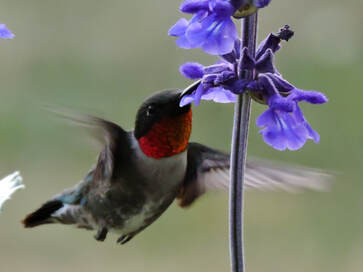 While recording hummingbird sightings, I've been paying close attention to how the migration compares to last year. Even though some people are saying the hummingbirds are much earlier than last year, the overall trend and comparison to 2021 is very similar. I think people are starting to understand a lot more now that getting your feeders out early makes it a lot more likely that they'll see an early male, and this is the key to much greater success. A number of people have it set in their mind that a certain date each year is when the hummingbirds will return, so they place out feeders at that time and then say the hummingbirds arrived on schedule. The fact is that some males are passing through well before the rest and pass through many yards that are absent of nectar. The reason I bring this up is that people throughout different regions of the United States have often times told me that hummingbirds show up in early to mid May in their region. I know for a fact the hummingbirds are well before that, not only by the migration maps that show them scattered across the country, but the fact that we get them in Alberta, Canada in mid-May, and thousands of hummingbirds have to pass through every region of the eastern half of the United States in order to get to our place. I mention this all so that people will increase their chances of seeing hummingbirds, increase their chance of having a male set up territory in their garden, and increase their overall population for that season and years to come. The male hummingbirds always have a lead on the females by a few days all the way up to a few weeks, so if you're waiting to see a hummingbird or thinking your normal time is what you think it is, there is a great possibility that hummingbirds are already in and around your region for several days or even weeks before you place out your feeders. Where I live, the arrival of the very first male Ruby throat hummingbirds is fairly consistent, as over the years the earliest hummingbird I've seen is May 13th and the latest first arrival was May 23rd. This gives a variance of 10 days at the most, but in Eastern Canada there have been first sightings as early as late March, and first sightings as late as May 1st. This gives a range of nearly 5 weeks difference. Even though other factors play a dominant role in when hummingbirds migrate, weather plays a major role on their Northern migration as well. If Flowers aren't blooming in your region because of a cold Spring, food will be very sparse, and greatly affecting their movement. The cold temperature itself has less of effect on them because they have a mechanism that helps them cope with these temperatures for lengthy periods of time. The problem lies with the lack of food available, because flowers and insects are also very reliant on good weather and temperatures. As a matter of fact we've had hummingbirds of different species in Alberta, late in the season when temperatures have dipped to minus 20 Celsius. The hummingbirds have survived through this because people have continued to provide nectar. The real problem has been the lack of insects that provide the protein. I only mention this so that those thinking the temperature is too cool for hummingbirds to arrive, understand the hummingbirds are far more resilient than we know. The males that are passing through are risking to the peak of their tolerance in order to get to a territory where they can dominate and retain breeding rights for that territory. |
Archives
June 2024
Categories
All
|
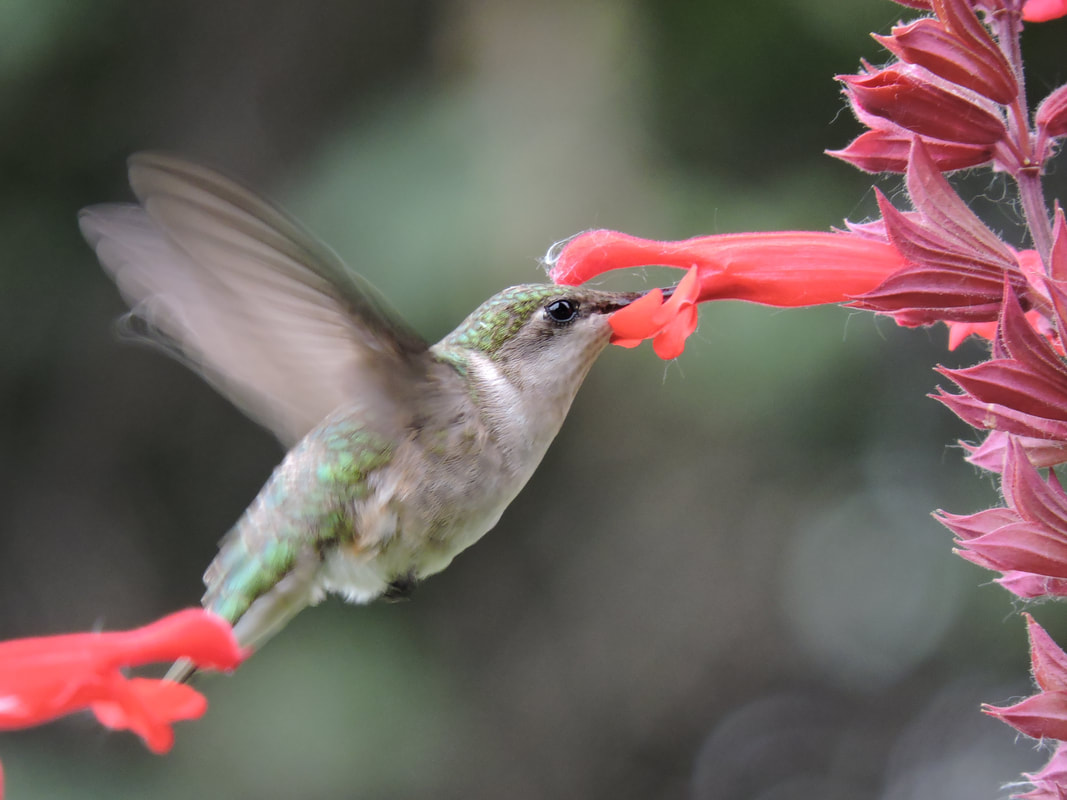
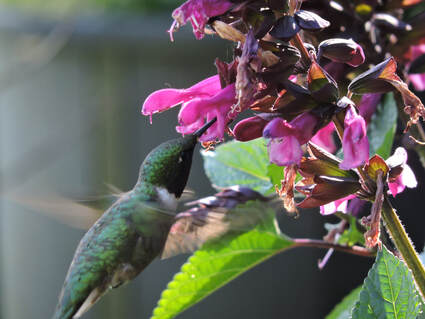
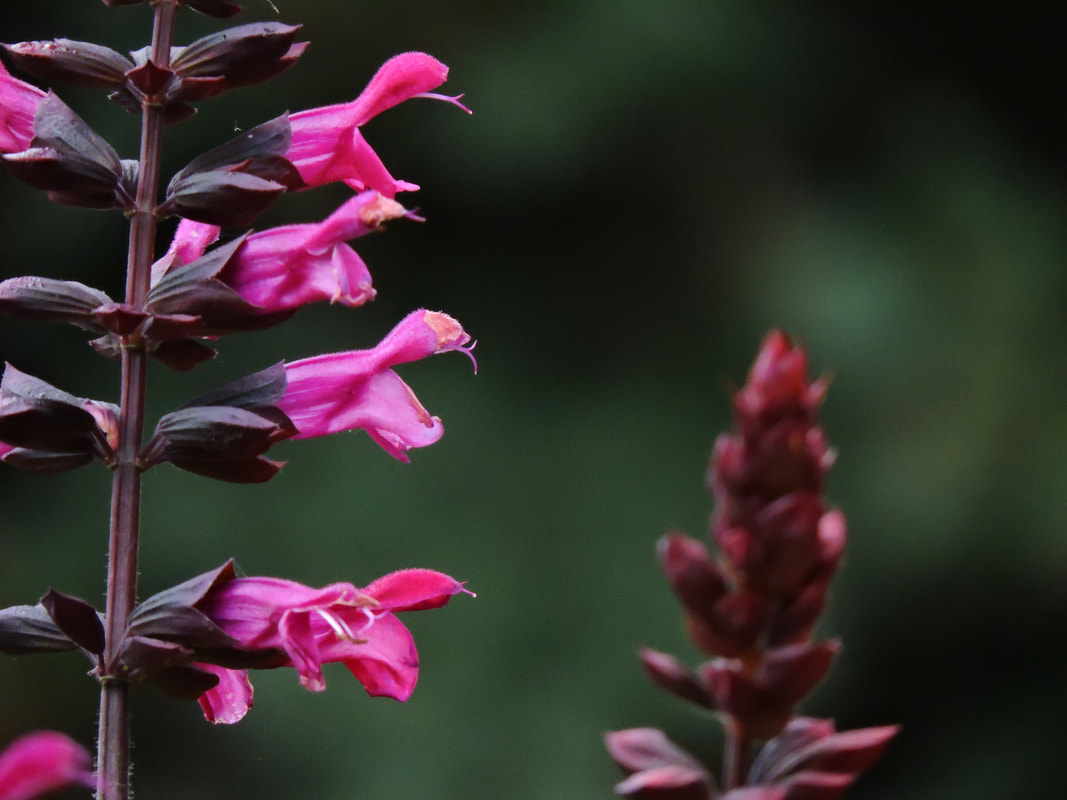
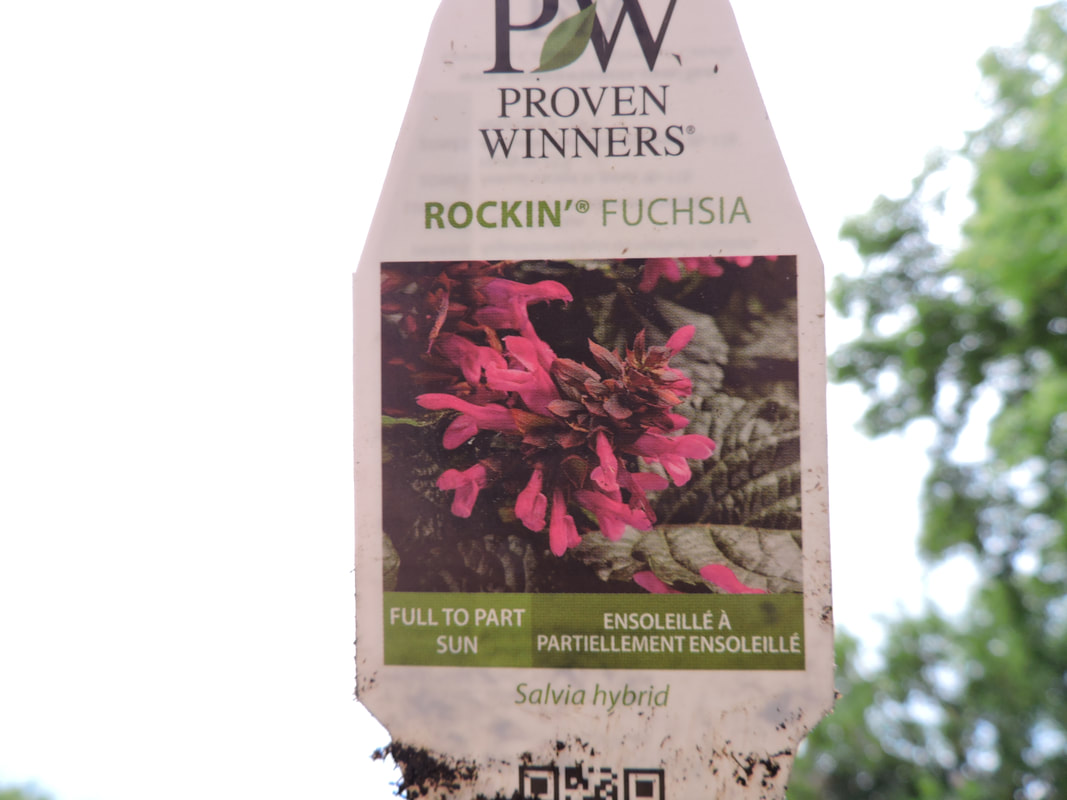
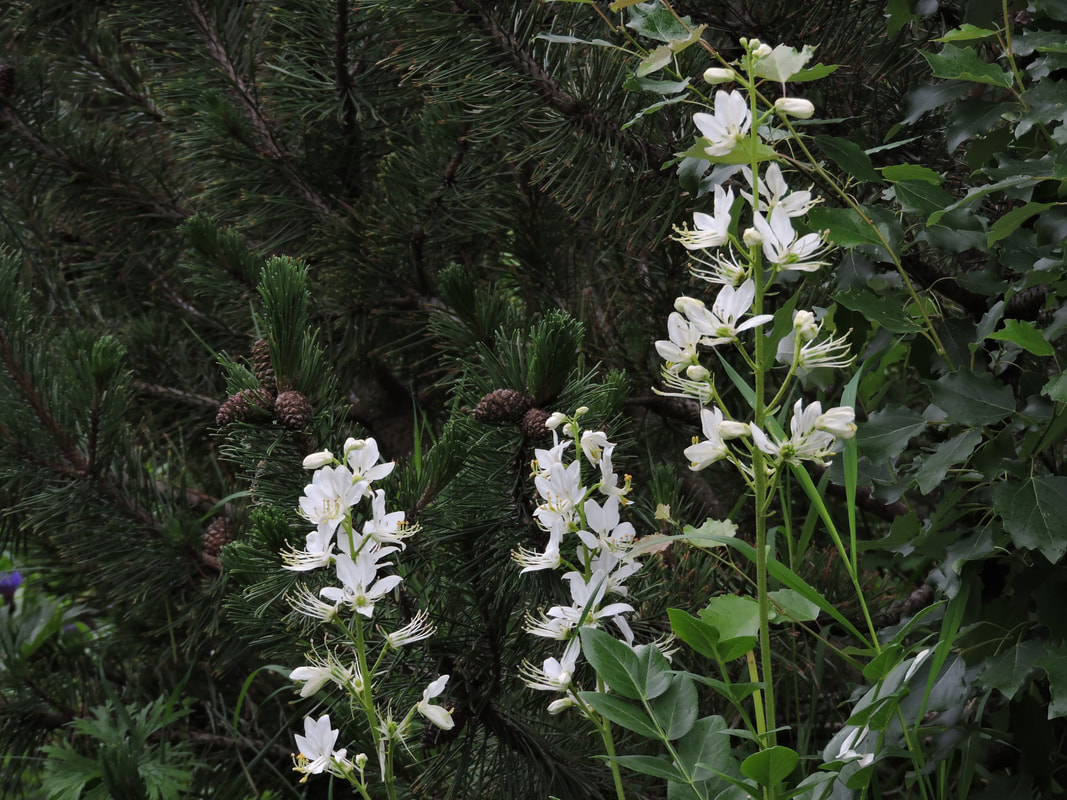
 RSS Feed
RSS Feed
